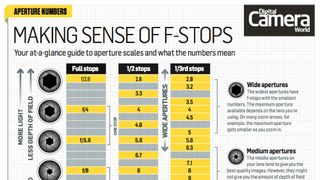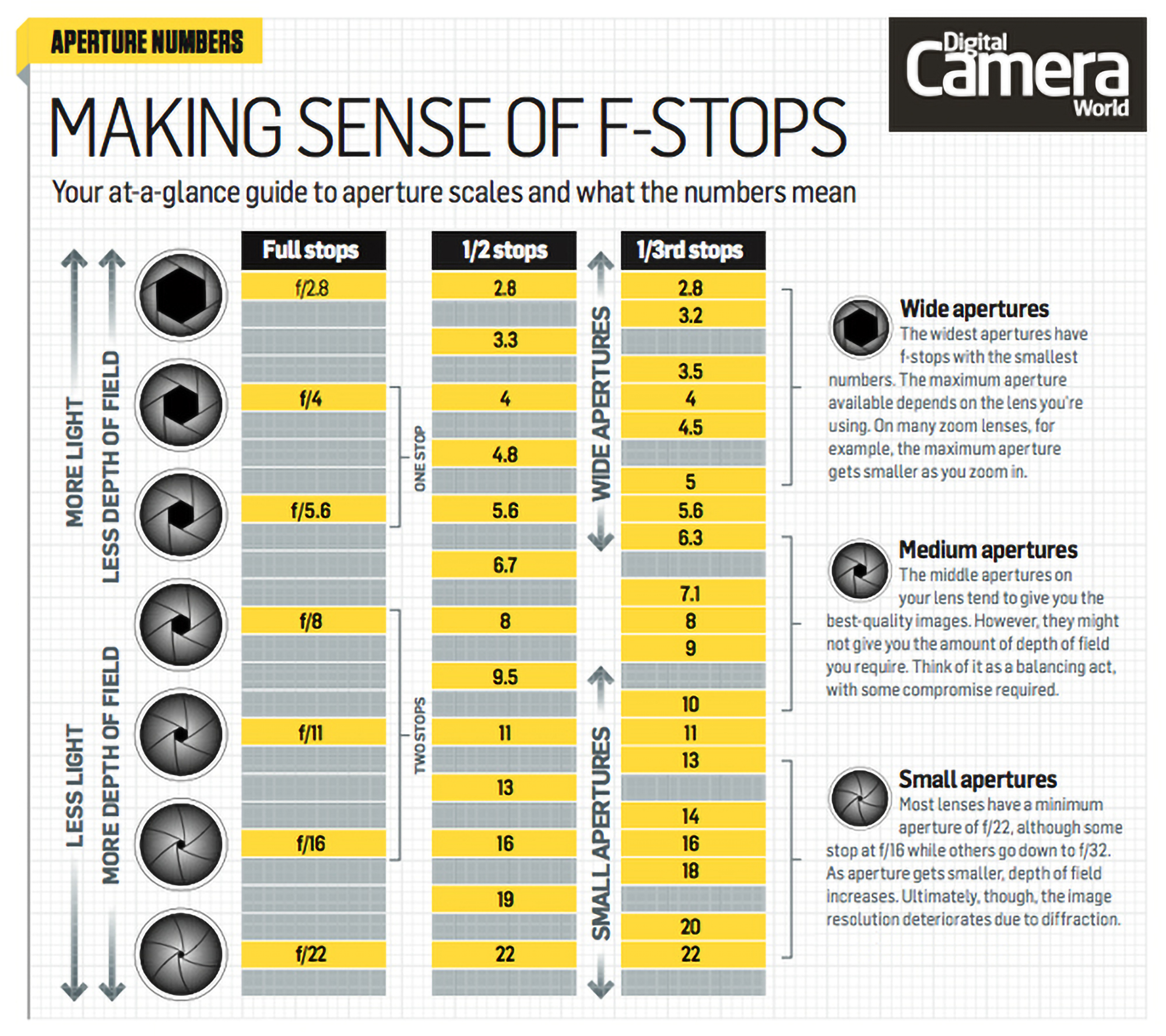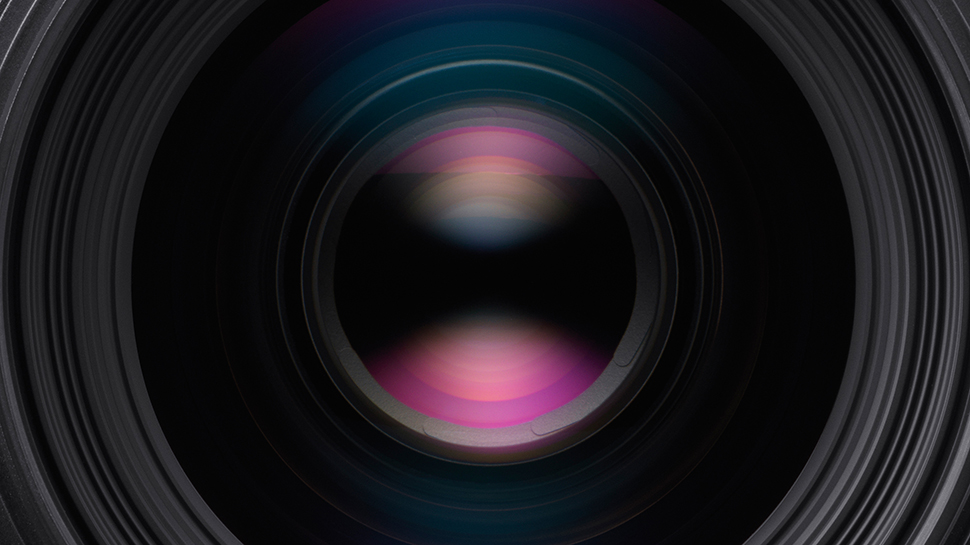Do Digital Cameras Have More Fstops
Photography cheat sheet: How to sympathize f-stops

Scroll downward for your crook sheet
Even if you've never changed the f-terminate on your lens or through your camera, you've probably noticed this setting at some point. While its entirely possible to leave the camera to bargain with this and never accommodate it yourself, information technology's arguably the nigh important affair to larn if you really want to take charge of your photography.
Definition: What are f-stops?
Otherwise known as aperture size, the f-stop regulates the amount of light that can pass through a lens at a given shutter speed. Assuming naught else changes, a pocket-sized discontinuity (say f/16) will permit in less light than a larger one (say f/4) , then it would take longer for the aforementioned quantity of light to pass through to the sensor. It works on the aforementioned principle as an hourglass, in that the size of the opening betwixt the two chambers dictates how long a quantity of sand will pass from the superlative to the bottom.
So, the smaller the aperture, the longer the shutter speed you'll demand in a given scenario. You can see this for yourself by setting your camera to its Aperture priority mode and adjusting the aperture in either direction: the shutter speed should change with every click of the dial.
Something that confuses a lot of novice photographers is that minor physical apertures have high f-stop numbers such as f/xvi and f/22, while large (or 'wide') apertures have depression f-stop numbers such as f/1.4 and f/2. The simple reply is that f/16 means one sixteenth, not 16. And f/4 is a quarter, not 4.
• Why do small apertures have large f-numbers?
What the f-cease number refers to in fact is the width of the aperture opening - and y'all get this by dividing the focal length of the lens by the f-number. So with a 200mm focal length, an f/4 aperture has a diameter of 50mm (i.east. a quarter of 200mm)
So, what kind of touch on does the f-terminate, or aperture, have on your paradigm? Showtime, it has the potential to bear upon exposure, although whether it does and so depends on the exposure fashion you utilize. If you lot use the Manual mode, for example, and simply change the aperture without also changing the shutter speed, your image will become darker or lighter depending on which you adjust this. In the Discontinuity priority mode, however, your photographic camera will automatically conform the shutter speed as you do this to go on the same counterbalanced exposure at all times.
F Stop cheatsheet

'Stopping downwards' and 'opening up'

Ever hear these terms? Stopping down the lens or aperture simply means to brand the aperture smaller, such as from f/8 to f/11. Opening up, meanwhile, means doing the reverse.
Whichever mode you use, changing aperture has an effect on depth of field. Depth of field concerns the extent to which different areas in the scene are rendered in focus, and a photographer will typically apply a medium or small aperture to achieve more than definition throughout. Depth of field does, however, likewise depend on other factors, such as where you focus in the scene.
Read more: Cheat canvas: How to read a histogram
In that location are issues with using both very small and very wide apertures, so yous need to judge this from scene to scene to sympathise which setting is most appropriate. Wide apertures are keen for isolating subjects from their backgrounds, but images can be softer at these settings due to an effect known as spherical aberration.
Peculiarly wide apertures can also be tricky to use in bright conditions, as your photographic camera may not be able to use a fast enough shutter speed to continue everything exposed correctly, which leads to overexposed images.
Small-scale apertures, meanwhile, tin can make an effect known equally diffraction more prominent, which also has a softening effect on images. These apertures are too harder to use when paw-holding a camera, as the smaller the aperture the longer the shutter speed you demand – and at some point you simply won't be able to hold it steady enough to produce a sharp paradigm. Here, a tripod or an effective paradigm stabilization arrangement can assistance.
• More photography cheat sheets
• More than photography tips
• Dictionary of photography terms

Thanks for reading 5 articles this month* Join now for unlimited access
Enjoy your first month for just £1 / $one / €1
*Read five complimentary articles per month without a subscription

Join now for unlimited access
Effort showtime calendar month for just £1 / $one / €1
Related articles
Source: https://www.digitalcameraworld.com/tutorials/photography-cheat-sheet-how-to-understand-f-stops
Posted by: grosefoughurpite.blogspot.com

0 Response to "Do Digital Cameras Have More Fstops"
Post a Comment